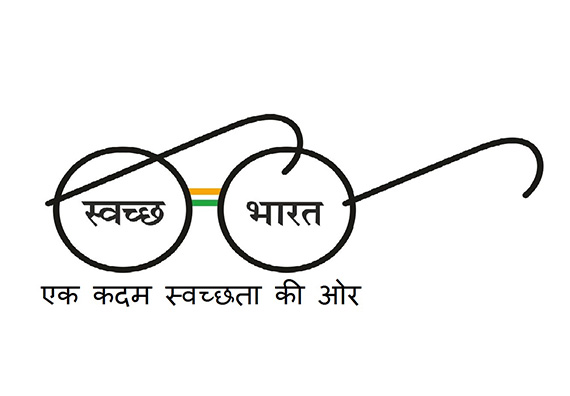
Nirmal Bharat Abhiyan (Nirmal Bhārat Abhiyān, and from 1999 to 2012 called the Total Sanitation Campaign, or TSC) was a programme following the principles of community-led total sanitation (CLTS) initiated by the Government of India in 1999. It was a demand-driven and people-centered sanitation program.[citation needed] It evolved from the limited achievements of the first structured programme for rural sanitation in India, the Central Rural Sanitation Programme, which had minimal community participation and was not following the principles of CLTS. The main goal of Total Sanitation Campaign was to eradicate the practice of open defecation by 2017. Community-led total sanitation was not focused on building infrastructure, but on changing cultural norms to prevent open defecation.[citation needed] In Maharashtra where the program started more than 2000 Gram Panchayats achieved "open defecation free" status. Villages that achieved this status received monetary rewards and high publicity under a program called Nirmal Gram Puraskar.The campaigning ambassador for Nirmal Bharat Abhiyan is Vidya Balan.
On 2 October 2014 the Nirmal Bharat Abhiyan campaign was relaunched as Swachh Bharat Abhiyan (Clean India Mission).
Swachh Bharat Abhiyan (Clean India Mission and abbreviated as SBA or SBM for "Swachh Bharat Mission") is a national campaign by the Government of India, covering 4,041 statutory cities and towns, to clean the streets, roads and infrastructure of the country.
Background
Government started the Central Rural Sanitation Programme (CRSP) in 1986 primarily with the objective of improving the quality of life of the rural people and also to provide privacy and dignity to women.
The concept of sanitation was expanded to include personal hygiene, home sanitation, safe water, garbage disposal, excreta disposal and waste water disposal. With this broader concept of sanitation, CRSP adopted a “demand driven” approach with the name “Total Sanitation Campaign” (TSC) with effect from 1999. The revised approach emphasized more on Information, Education and Communication (IEC), Human Resource Development, Capacity Development activities to increase awareness among the rural people and generation of demand for sanitary facilities. This enhanced people’s capacity to choose appropriate options through alternate delivery mechanisms as per their economic condition. The Programme was implemented with focus on community-led and people centered initiatives. Financial incentives were provided to Below Poverty Line (BPL) households for construction and usage of individual household latrines (IHHL) in recognition of their achievements. Assistance was also extended for construction of school toilet units, Anganwadi toilets and Community Sanitary Complexes (CSC) apart from undertaking activities under Solid and Liquid Waste Management (SLWM).
To give a fillip to the TSC, Government of India also launched the Nirmal Gram Puraskar (NGP) that sought to recognise the achievements and efforts made in ensuring full sanitation coverage. The award gained immense popularity and contributed effectively in bringing about a movement in the community for attaining the Nirmal Status thereby significantly adding to the achievements made for increasing the sanitation coverage in the rural areas of the country.
Encouraged by the success of NGP, the TSC was renamed as “Nirmal Bharat Abhiyan” (NBA) in 2012. The objective is to accelerate the sanitation coverage in the rural areas so as to comprehensively cover the rural community through renewed strategies and saturation approach.
Objectives
Activities
Major activities covered under Nirmal Bharat Abhiyan were:
Copyright © 2016 - All Rights Reserved - thecivilindia.com
Developed by BRS MEDIA